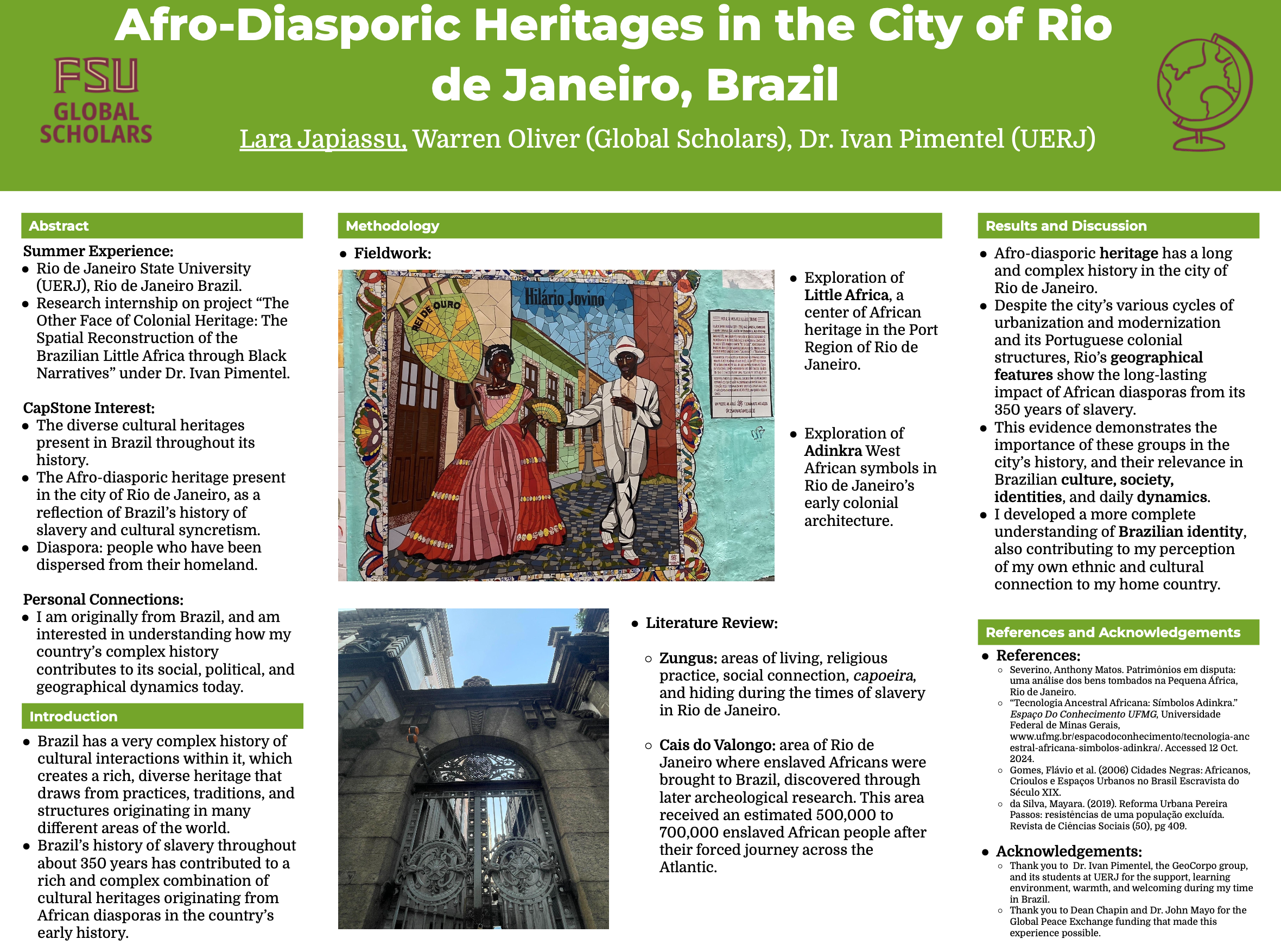Research Symposium
25th annual Undergraduate Research Symposium, April 1, 2025
Lara Japiassu Poster Session 4: 3:00 pm - 4:00 pm / Poster #254
BIO
Hi! My name is Lara and I am a Political Science and International Affairs student here at FSU. I am originally from Niteroi in Rio de Janeiro, Brazil, but I currently live in the Tampa Bay area. I have been involved with FSU research since my first year here, through UROP, the RIBC program, and Global Scholars. My interests include Latin American history and politics, cultural identities, human rights, immigration, and political violence. This year, I am presenting my Global Scholars CapStone project, which I completed by going to the Rio de Janeiro State University (UERJ) in Brazil last summer.
Afro-Diasporic Heritages in the City of Rio de Janeiro, Brazil
Authors: Lara Japiassu, Warren OliverStudent Major: Political Science and International Affairs
Mentor: Warren Oliver
Mentor's Department: Center for Undergraduate Research and Academic Engagement (CRE) Mentor's College: N/A Co-Presenters:
Abstract
The city of Rio de Janeiro, once the capital of Brazil, served for a long time as a center for the brutal system of slavery that defined the country’s history. Despite the approximately one million enslaved people that entered Brazil through Rio de Janeiro’s Cais do Valongo port, attempts at erasure of their history, impact and heritage have been consistently made throughout the city’s history. How can Rio de Janeiro’s geographical features show evidence of Afro-diasporic heritages in the city? Through this Global Scholars CapStone project, I participated in Dr. Ivan Pimentel’s research project titled “The Other Face of Colonial Heritage: The Spatial Reconstruction of the Brazilian Little Africa through Black Narratives,” at the Rio de Janeiro State University (UERJ) to explore the evidence of Afro-diasporic heritage in Rio de Janeiro’s central area. We conducted literature reviews and fieldwork, focusing on physical features such as Adinkra symbols and the Little Africa port region, and overlooked histories like that of Zungus and the Cais do Valongo. Ultimately, the physical features present in Rio de Janeiro’s central region demonstrate a long-lasting impact of African diasporas from Brazil’s 350 years of slavery. They show the importance of these groups in the city’s history, and their rich and complex relevance in Brazilian culture, society, identity, and modern dynamics.
Keywords: geography, history, culture, heritage


